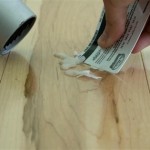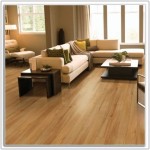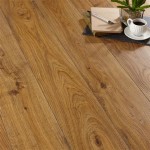Asbestos In Linoleum Flooring: A Guide to Essential Aspects
Linoleum, a durable and versatile flooring material, has been widely used in homes and commercial buildings for decades. However, it is important to be aware of the potential presence of asbestos in older linoleum flooring. Asbestos is a naturally occurring mineral that was commonly used in various building materials before health risks associated with its exposure became widely known.
Asbestos can be found in linoleum flooring manufactured before the 1980s as a reinforcement agent to enhance its durability and fire resistance. The potential presence of asbestos in linoleum flooring raises concerns about health risks associated with exposure to its fibers.
Health Risks of Asbestos Exposure
Asbestos fibers are extremely small and can become suspended in the air, posing a risk of inhalation. When inhaled, asbestos fibers can lodge in the lungs and cause various health problems, including:
- Asbestosis: A progressive scarring of lung tissue leading to shortness of breath and impaired lung function.
- Lung cancer: A common type of cancer associated with asbestos exposure.
- Mesothelioma: A rare and aggressive form of cancer that affects the lining of the lungs, chest cavity, or abdomen.
Identifying Asbestos in Linoleum Flooring
Identifying asbestos in linoleum flooring can be challenging because asbestos fibers are not visible to the naked eye. Professional testing is required for accurate identification. There are two main types of assessments that can be conducted:
1. Visual Inspection: A trained professional can examine the flooring, taking note of the age, condition, and any signs of deterioration. While a visual inspection cannot confirm the presence of asbestos, it can help determine the likelihood and need for further testing.
2. Laboratory Analysis: Samples of the flooring are collected and analyzed under a microscope to confirm the presence of asbestos fibers. Laboratory analysis is the most accurate method for identifying asbestos in linoleum flooring.
Precautions and Recommendations
If you suspect the presence of asbestos in your linoleum flooring, it is crucial to take precautions to minimize potential health risks. Here are some recommendations:
- Avoid disturbing the flooring: Do not sand, saw, or otherwise damage the flooring, as this can release asbestos fibers into the air.
- Maintain good ventilation: Keep windows open to ensure proper air circulation and reduce the concentration of any potential asbestos fibers in the air.
- Contact a qualified professional: If you have concerns about asbestos in your linoleum flooring, contact a certified asbestos abatement contractor for professional assessment and removal.
Conclusion
Asbestos in linoleum flooring poses a potential health hazard, especially in older homes and buildings. Understanding the risks and taking appropriate precautions is essential to minimize exposure. Proper identification and safe removal of asbestos-containing flooring by qualified professionals are crucial for protecting your health and ensuring a safe living environment.

How To Identify Remove Asbestos In Linoleum Flooring Ferro

Asbestos Felt Dangerous In Roofing Flooring Paper Mills

Asbestos Regulations And What You Need To Know

Asbestos Floor Tiles What Does In Flooring Look Like

The Truth About Asbestos Vinyl Flooring Chemcare

Asbestos Vinyl S History Dangers Abatement

Vinyl Floor Tiles And Covering Asbestos

Asbestos Flooring Gallery Acorn Ytical Services

Asbestos Floor Tiles And Containing Sheet Flooring Vintec

Asbestos Vinyl S History Dangers Abatement
Related Posts








